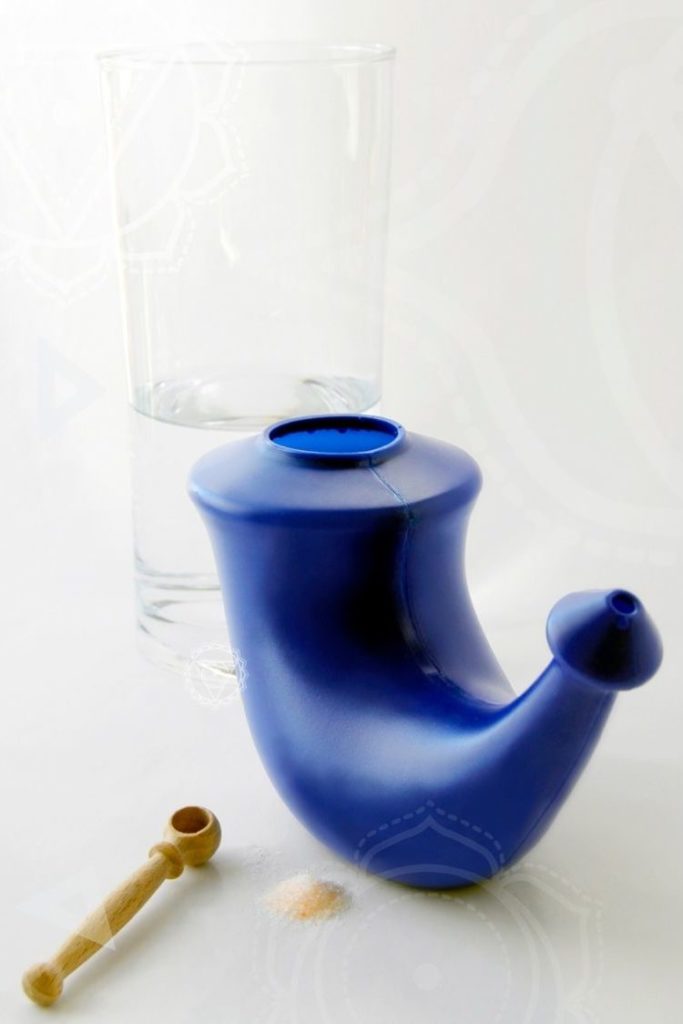
Before I sat down to write this piece, I wiped off my desk. I grabbed a glass of water, and I lit a candle. Earlier that day, I made time for my meditation ritual after I showered and brushed my teeth. These are all forms of the yogic principle known as saucha.
What is Saucha?
Saucha is one limb on the sprawling tree of yoga principles and ethics. To explain saucha, we have to zoom out a bit and mention the yamas and the niyamas.
The yamas and niyamas are the foundational principles of yogic thought and philosophy as outlined in The Yoga Sutras by Patanjali. They move a yoga practice off the mat and turn it into a way of living. They can be thought of as guidelines towards a fulfilling life of joy and well-being.
Yamas is a Sanskrit word meaning “restraints.” They can be thought of as the things not to do:
- non-violence (ahimsa)
- not lying (satya)
- non stealing (asteya)
- non excess (brahmacharya)
- non-possessiveness (aparigraha)
Saucha is the first of the niyamas. A niyama is an “observance,” or something we would like to cultivate:
- purity or cleanliness (saucha),
- contentment (santosha)
- self-disciple (tapas)
- self-study (svadhyaya)
- surrender (Ishvara pranidhana)
In these yamas and niyamas, Patanjali lays out a roadmap for self-realization.
Saucha traditionally translates to purity or cleanliness. But this one topic has a myriad of meanings and ways to help students strengthen their yoga practice. There is the surface-level meaning of saucha: cleanliness of the body and of the living space, but there is also an aspect of internal cleanliness to it. We must cleanse both the body and mind.
Saucha calls us to strive for purity within the mind, body, and spirit. Saucha wants us to be free from the clutter of distraction. It wants us to create internal clarity so that we can meet each moment with purpose. As saucha is the first of the five niyamas, we see how important it is to the yogic path.
The physical practice of yoga itself is saucha – yoga asana is meant to cleanse and purify the body. Pranayama – or yogic breathing techniques – is also a form of saucha. Yoga philosophy teaches us that these processes are a necessary form of purification and release if we want to awaken the greatness of our spirits.
We practice yoga so we can create more freedom in our bodies and promote our health. We meditate to cleanse our minds and open our hearts. We practice purity in our actions as a way to remove negativity from our relationships and the external world.
The practice of saucha can take many different forms. From an asana practice and a shower to a regular meditation routine – let’s take a look at some of the different forms this niyama can take.
Yogic Cleansing Techniques
The physical practice of saucha can include what yogis call a “kriya,” or a cleanse. These can range from luxurious self-care to odd, internal cleanses.
Jal Neti Kriya
The Hatha Yoga Pradipika attributes many beneficial effects to the practice of Neti, both for the body and mind. For a Neti practice, you’ll need a Neti pot (can be made from ceramic, plastic, or even glass) and lukewarm, isotonic saltwater.
If you buy a neti pot kit in the pharmacy (sometimes they’re called nasal reconstitution kits), you can find single-dose packets of special nasal salts. These kits will recommend that you use purified water, and I do too! Have a few bottles handy in the bathroom for this, especially if you have allergies or sensitive skin and tend to break out. If your tap water is hard, this is even more important!! Many people experience a burning sensation in the nasal passage when first using neti, but this will pass.
Using the pot, pour the mixed solution into one nostril until it flows out the other one. Then, the practice is repeated on the second side, and the nose is dried by rapid breathing.
Kappalabhati
Kappalabhati is a yogic practice used to help cleanse our bodies and minds. The practitioner uses short, emphatic exhales and gentle inhales as a way to cleanse the lungs, release internal toxins, and quiet the mind.
Kappalabhati pranayama is known to create heat in the body, so after you do a few rounds make sure to close your eyes and relax for a bit.
Trataka
Trataka is another yogi purification method, but this one is for your eyes. This method of purification involves staring at a single point such as a small object, black dot, or candle flame.
Trataka is said to enhance the ability to concentrate. It increases the power of memory and brings the mind to a state of awareness, attention, and focus.
Nauli
Nauli is one of the shatkarmas: a traditional cleanse of classical hatha yoga, though it’s not taught in many yoga classes. The exercise is meant to create physical purity by cleansing the digestive organs and the small intestine. Nauli can be broken down into a few steps:
- It involves creating an abdominal lock, Uddiyana bandha: where the abdomen is pulled back and up after emptying the lungs.
- Then, you alternate between contracting the central, left, and right muscles of the abdomen, so that your stomach creates a wave-like effect.
As this is a more advanced technique, it is best done with the guidance of a yoga teacher.
Dhauti
Dhauti is another yogic cleansing technique intended to clean the digestive tract. There are four parts to Dhauti: Antara (internal), Danta (teeth), Hrida (cardiac or chest region), and Mula Shodhana (rectal cleansing). Each of these techniques is then divided into sub-practices as well.
Some practices are as extreme as drinking warm salty water and performing specific yoga asanas until the water flows from the anus. Others are as mild as brushing your teeth. Most of these cleanses are suggested only with the supervision of an expert.
Bhasti
Bhasti is an enema of herbal oils (not essential oils!) or decoctions used in Ayurveda. Bhasti is meant to help balance out the Vata Dosha, which is seen as a common energetic cause of disease. It involves the retention of sesame oil and herbal teas in the anal cavity.
When fluid has been retained for the appropriate length of time, sit on the toilet to allow the passage of the fluid and fecal matter.
Examples of How to Practice Saucha Today
Embodying the term saucha can take many forms. Through different observances of the body and mind, we can begin to remove impurities from our thoughts, cleanse our nervous system, and establish ourselves on the path of self-discovery.
Your Body
The physical practice of saucha in the body is all about honoring and maintaining your physical health and wellbeing. The idea is that when we take care of our physical body, we have more room for spiritual thought and compassion.
Physical saucha can look like going to a yoga class, washing your hands intentionally, or just maintaining general cleanliness of body. Maintaining a healthy diet, putting love and intention into your food, and taking care of your immune system through good hygiene can also be ways to create saucha. However, saucha is far from just external purity.

Your Mind
Saucha isn’t just about keeping our bodies clean; it’s also about balancing our negative mind with our positive mind and neutral mind. A physical yoga practice can usually help you find a clear mind, but if yoga postures aren’t accessible to you, there are other practices to help you as well.
Developing a regular meditation practice is one of the best ways to find saucha of the mind. Through meditation, we become better at understanding our thoughts and how they work. This gives us the power to release thoughts that are negative, distracting, or hurtful. If you struggle with focusing during meditation, try adding a mantra.
Through practices like these, we are able to unify the head and the heart. We cultivate a sense of clearness in the body that trickles into well being and contentment in our daily life.
Your Relationships
A relationship might not be the first thing you think of when you think of cleansing or purification. But as our actions create ripple effects in our everyday life, so too can we seek to create clarity with our friends, teachers, and loved ones.
By practicing patience, good listening, open communication, and loving acceptance, we allow ourselves to keep our relationships healthy. If we are able to slow down and give the relationships in our life our undivided attention when they need it, then we can be pure with the present moment.
Your Space
Creating cleanliness in your environment is perhaps one of the most commonly practiced forms of saucha. Just as I made sure to clean my desk and set my space before I sat down to write, we’re taught in the yoga world to love and set intention into our surroundings. Decluttering, dusting, or even beautifying your living spaces can be forms of saucha.
When we maintain a clean and inspiring environment, we feel more at peace, more creative, and less distracted. There is an element of simplicity in this saucha practice, but it’s also open to interpretation. Whatever feels good and inspiring to you is what you should do. No one can tell you what your yoga practice should look like!
Next Steps
- Take my History of Yoga Course to learn all about yogic principles and how they are applied to daily life!
- Order my Yoga Life book for a practical guide to applying yogic principles to your life and constitution.
- Check out my Yoga Philosophy knowledge hub for more inspiring content
- Join Uplifted for exclusive content that you can access right from the app. Take a deep dive into your practice with me this year!
Experience 3 Training Videos from Inside My 200-Hour Online YTT

YOU MIGHT ALSO LIKE
- How to Do Sitali Pranayama: The Cooling Breath
- Saucha: 6 Ways Purify Your Body, Mind, Relationships & Space
- Aparigraha: 6 Ways To Completely Let Go In Yoga
- Brahmacharya: Yoga’s Guide To Sensual Indulgence
- Tapas In Yoga: 4 Ways This Niyama Will Light Up Your Life
- How To Practice Satya: Ask Yourself These 3 Simple Questions
- The Meaning of Anjali Mudra: Yoga’s Sacred Greeting
- What is Asteya? 5 Powerful Ways to Practice Non-Stealing in Yoga and Life
- Understand the Koshas and Discover 5 Deeper Dimensions of You
- 4 Modern Ways to Deepen Your Svadhyaya (Self Study) Practice
- Why Ahimsa (Non-Violence) Improves All Areas of Your Life
- What Is Santosha? Yoga’s Philosophy of Happiness.
- Ishvara Pranidhana: How to Surrender to the Universe
- What is Samadhi? The 8th Limb of Yoga Explained
- What Is Dhyana In Yoga? The 7th Limb Explained
- What is Dharana? The 6th Limb of Yoga Explained
- How To Safely Practice Pratyahara In The Modern World
- The 5 Niyamas of Yoga: The Second Path of Yoga’s Eight Limbs
- The 5 Yamas of Yoga: The First Path of Yoga’s Eight Limbs
- What Is Asana? One Of The Most Popular Yogi Terms Explained
- 10 Essential Types of Pranayama Breathing Techniques That You MUST Know
- The 8 Limbs of Yoga Study Guide [Explained For Modern Life]
Learn how to do 11 of the most popular yoga poses correctly. Free video + PDF download.














